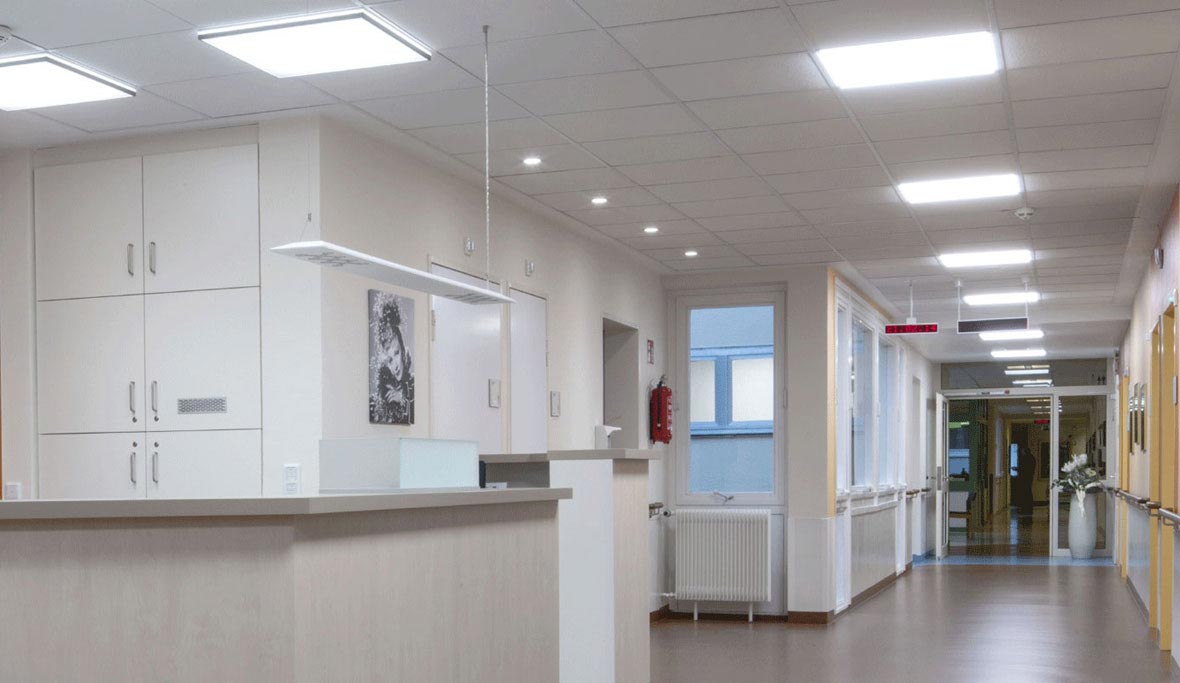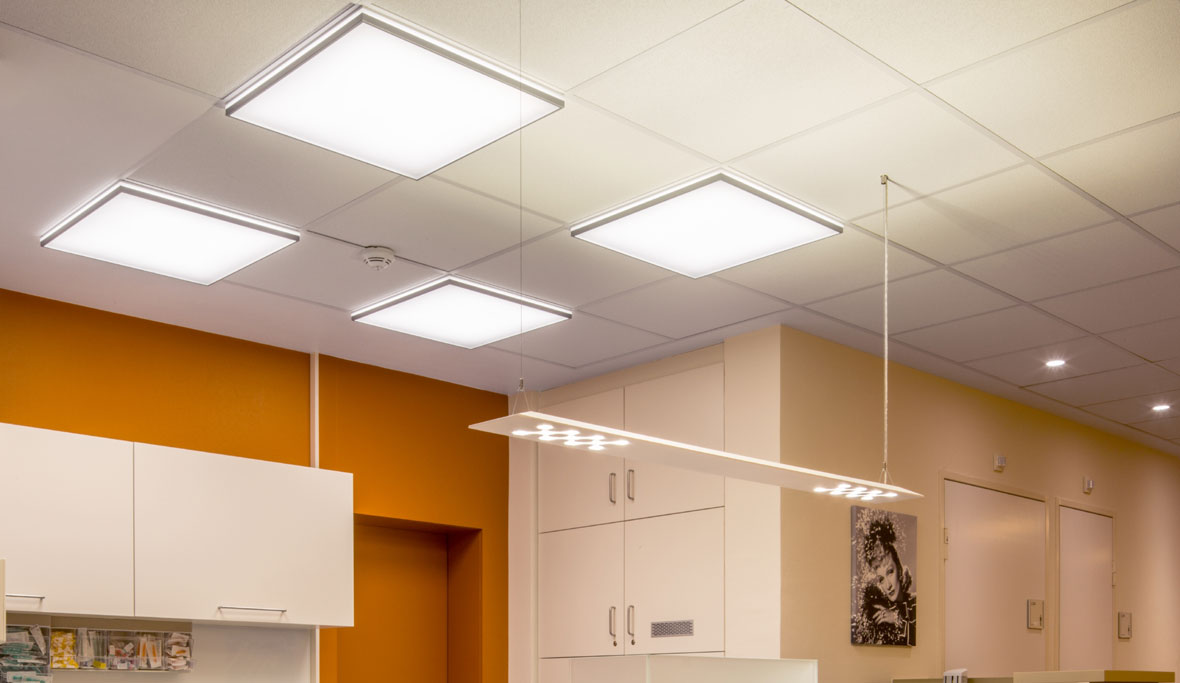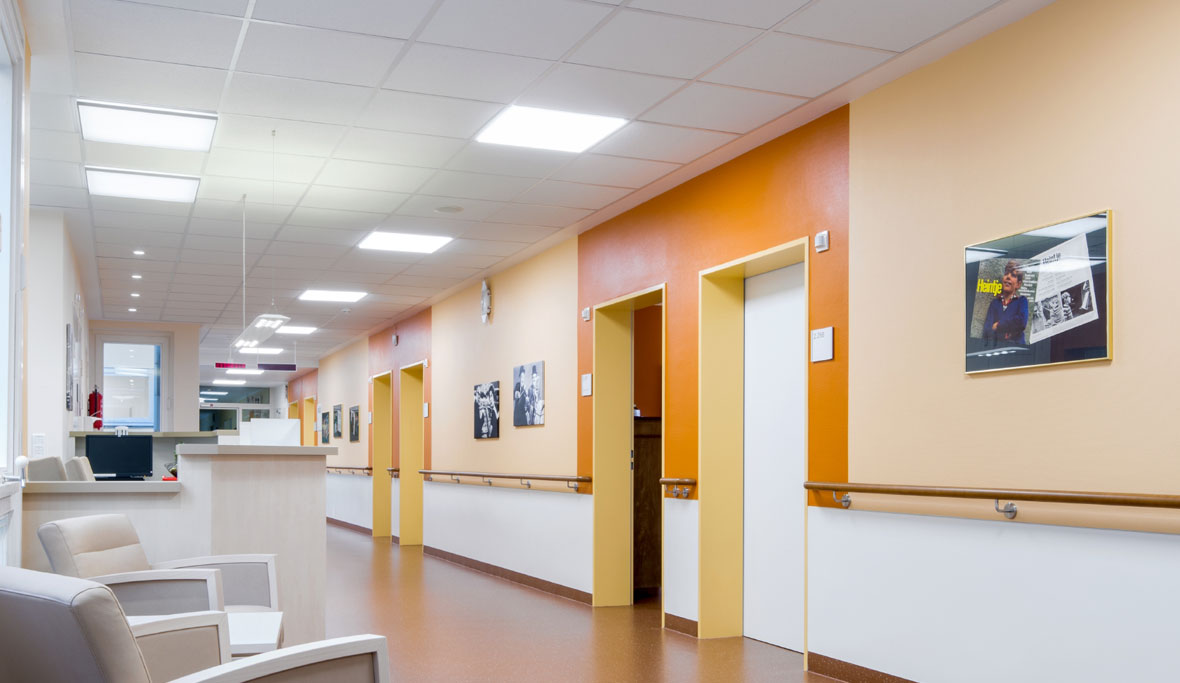Geriatrics station - Brilon, Germany
Geriatrics station - Brilon, Germany
The Arnsberg-based specialists for professional light installed circadian lighting in the patients' rooms and the corridors. All of the LED luminaires - primarily Liventy and Belviso - are controlled via a central light management system. With their light, they automatically replicate the sun's course of the day, adjust the light colour and intensity to the respective time of the day, and thereby sustainably support the biorhythm of both patients and personnel. "We have had very positive experience with this," reports Birgit Hennemann, head nurse of the state for geriatric medicine.
Higher illuminance
Not only do the light solutions by TRILUX prevent that the natural day/night rhythm gets out of sync, but they also address the specific needs of older people regarding a technologically mature illumination system. For one, there would be a higher illuminance. A 75 year old does, for example, need light that is 20 times stronger than a person in their early 20s. Similarly, a lot of attention is required in the target group oriented planning in order to avoid reflections, light reflexes, or pronounced light/dark contrasts. This way, the risk of falls and accidents is minimised. In the corridors, an illuminance of 600 lux is achieved at eye level; on the floor it is still 300 lux. In patients' rooms, the illuminances vary during the day between 600 and 1500 lux.
Circadian light solutions
If the illumination level is correct, this has an immediate impact on the wellbeing of the seniors. More light reduces the uncertainty, provides for more balance, and leads to a more relaxed state of mind, which Birgit Hennemann has observed day-to-day at her station, too: "The patients feel well faster and are calmer." In the development of the circadian light solutions, the TRILUX engineers rely on the latest insights of sleep research. According to this, people's "inner clock" responds to different portions of blue and red in the light. Dependent on the composition, the hormones melatonin and cortisol are generated which have a significant impact on the wake and sleep phases and thereby control performance and wellbeing.



Such an illumination system sounds complex, which is true, in part - but not for the user! Because the new TRILUX business strategy SIMPLIFY YOUR LIGHT ensures that a path that is as straight-forward as possible is taken in the planning, installation, and utilisation of highly efficient light solutions. But the light is not the only thing that plays an important role in the new geriatric station at the Maria-Hilf hospital; there, a holistic approach is being pursued. "Because high tech medicine alone," according to the head physician, Dr. Heinrich Kerkhoff, "rarely brings an older person back to health."
A higher need for care
There, for the patients an individually aligned treatment package is being compiled. Physiotherapists, psychologists, speech therapists, social services, and nutrition consulting work hand in hand. As such, the first measures for mobilisation already start within a few days after surgery in order to counteract a muscle loss and to ultimately not have a higher need for care than before the procedure.
A special design concept
Eye-catching at the geriatric medicine department is the combination of artificial light and the skilful interplay of the colours in the furnishings. The result: a harmonious and accentuated design appearance. No trace of a sterile clinic atmosphere – thanks to Sylvia Leydecker and her Cologne-based office "100% interior", which was responsible for the interior architectural design concept.